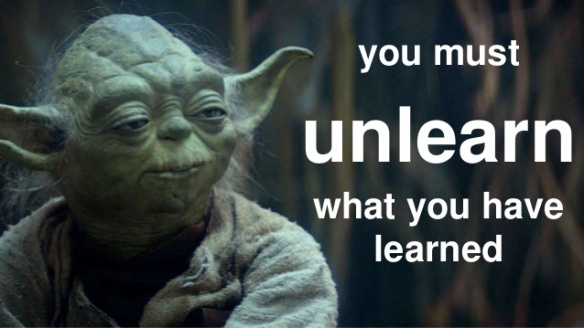In the last days I'd contact with this article:
https://www.bcg.com/publications/2020/end-management-as-we-know-it.aspx
and decided to make this post.
Management is under extinction
Yes.
If you are a manager, that plays politics... if you repeal talented people... if you are a control freak... if you are not listening any critic from your subordinates... you are in the risk group.
Sorry to write so hard words, but I find a value on being honest with you.
I'm here to help you.
Even if it hurts.
Maybe no one told you the origin of Agile. Twas written in a manifesto.
Do you know what a "manifesto" is?
Yes, a declaration letter. A strike.
People was tired of bad management. And the Agile founders express that exactly today. If you ask them about... take a look on this picture:
This is Martin Fowler, agile manifesto founder, in his video "Explaining Agile".
At minute 12:51 he says "People are not predictable", and dedicate this finger to someone. (maybe a manager?)
https://www.youtube.com/watch?v=GE6lbPLEAzc
but...
At minute 12:51 he says "People are not predictable", and dedicate this finger to someone. (maybe a manager?)
https://www.youtube.com/watch?v=GE6lbPLEAzc
but...
What is "management"?

They could crash and mistreat any human being, only driving them with the Fear of being Fired.
The "management" developed a culture of "productivity and control". With strong hierarchies, and a "command and control" system. Of course that includes a "reporting culture", which also includes the 1-directional Feedback (top to bottom)
The Gods (bosses) could judge you as worker, and you could not have any chance of complaining.
With the arrive of technology, internet and communications, we switched from the "production society" to the "Knowlege Society".
The Game changed.

Before, the productive machine, was property of the factory owner. Now the productive machine (the brain), belongs to the employee, and has legs to walk out the door.
Now we have a deprecated management social class. Many of them are already extinguish, but the rest (maybe including you) are next.
Now we have a deprecated management social class. Many of them are already extinguish, but the rest (maybe including you) are next.
What's the difference?
In the old structure, the manager social class, were like Land-Lords in feudal system. Each Lord has its territory, and everything inside it should obey and follow his command.
Now we are moving more into an "internal capitalism" were "free exchange" trends to be the new standard. Negotiation and freedom flows inside constraints.
Now you cannot command, you need to negotiate. You need now to learn how to cultivate a relation with your employees. Build Trust, and gain respect.
In the past, scientific managers created a value to the company, providing control, hire and fire power. Keeping people scared of being fired to hold high productivity rates.
Nowadays, ir some manager is a "Fear Creator" he is a problem. No, sorry...
He is THE problem
Its Profit's Enemy...

Traditional managers are not only problem creators, they are expensive.
A big portion of Budget Waste are "Internal Politics Game".
A Politician is someone that will take decisions for his own benefit, and not for the Company, the Customer or the Employees.
That's why today big companies trends to split into small startups, and to flat hierarchies.
But this is not enough...
We are lacking a cultural change.
The good news:
- this can change
- you can change
- we can change together
Ok, gotcha. but... What I can do?

Exactly, thanks Yoda.
You must abandon and weak your old competences, and train, develop, cultivate new ones.
For example: to listen.
In the Jurassic World, your work was to speak (maybe to scream?). Now is to listen.
First step: stay open to change, learn and adapt.
Second step: connect with the "Value Creation Layer"
You must abandon and weak your old competences, and train, develop, cultivate new ones.
For example: to listen.
In the Jurassic World, your work was to speak (maybe to scream?). Now is to listen.
First step: stay open to change, learn and adapt.
Second step: connect with the "Value Creation Layer"
What the fuck is that ! ?
hahaha... nice.

Pic Author: Niels Pfläging
In every organization you have 3 social components.
- Formal (rules, hierarchies, contracts)
- Informal (relations, trust)
- Value Creation (Productive)
If you are a shitty traditional manager (a Dinosaur) you will focus on the formal structure, hierarchies a lot. And you will use the Informal layer for influence people (manipulate)... but basically this is the consequence:
The more you focus on Formal and Informal layers,
the less space left for Creating Value.
And, my friend, everything that is outside the Vaue Creation layer...
Is a Waste.
So, now, my friend. Ask yourself how you are contributing to the Value Creation layer. And maximize it.
Minimize formalities, hierarchies, meetings, politics. They could exists, but please...
... minimize.
You have now in front of you a path of self discovery.
- How old fashioned are you?
- Are you listening to people?
- Are you caring about what they need?
- Are you a "helper", or a "demander"?
- Are you committed to your people?
- You manipulate them like "resources", or you cultivate a relation with them as "people"?
- Do you give, what you want to receive?
I hope this post was as much painful as possible to help you wake up, and I wish you a wonderful travel of self-trasnformation.
Daniel












